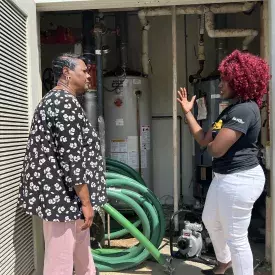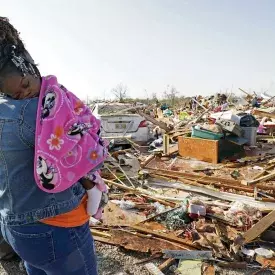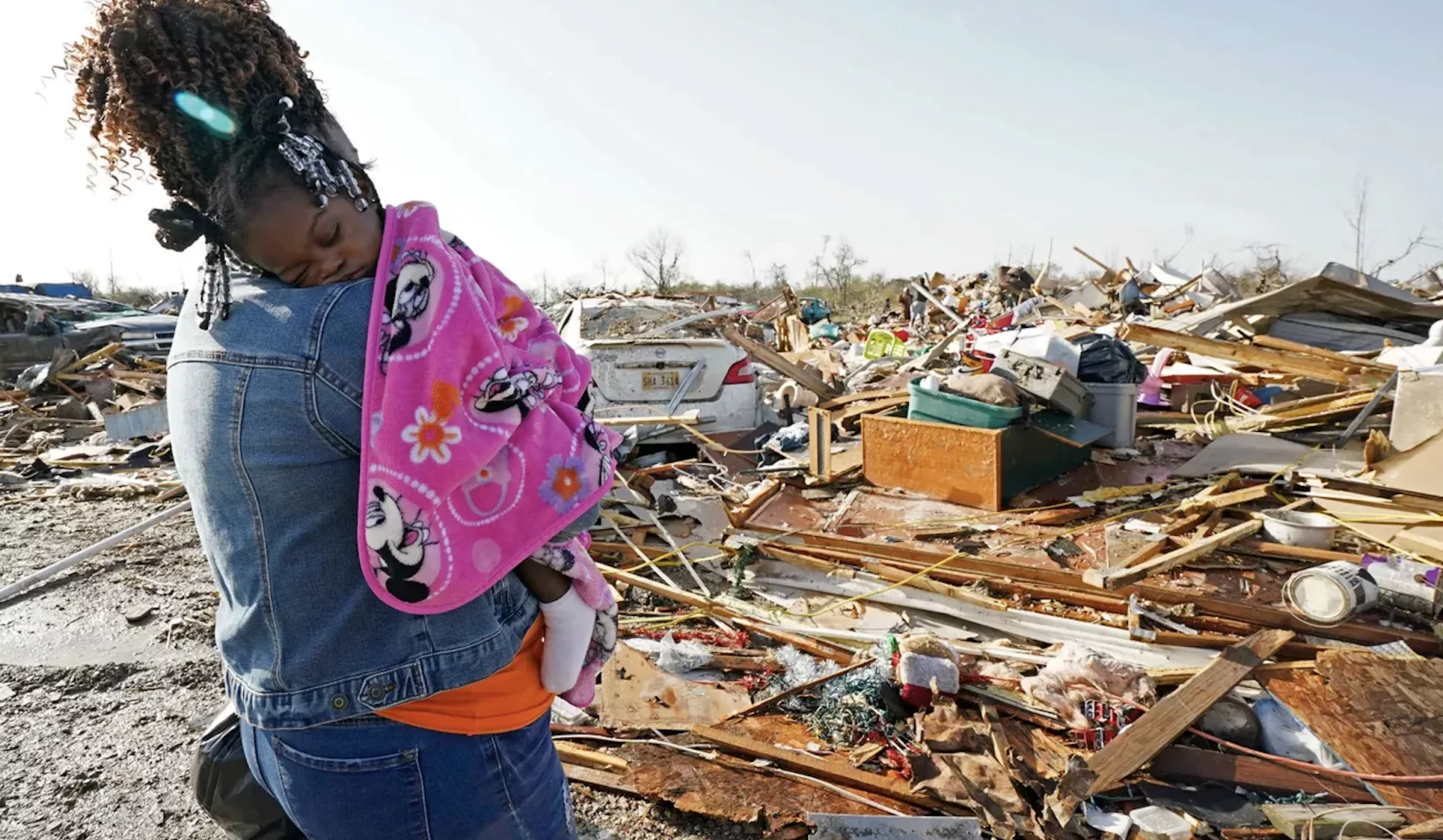
Experiencing a Natural Disaster?

Natural Disasters and Frontline Communities
In fact, a 2019 study found that Black and Latinx residents in American counties that experienced $10 billion in damages from natural disasters, such as hurricanes between 1999 and 2013, lost an average of $27,000 and $29,000, respectively. White people in counties with similar losses due to natural disasters instead gained an average of $126,000.
Types of Natural Disasters
Hurricanes
Climate change has made hurricanes more intense, with warmer sea temperatures and rising sea levels increasing storm strength and storm surges. These heightened risks disproportionately affect low-income and marginalized communities, making Black populations particularly vulnerable to future storms.But hurricanes aren't just a coastal problem. Rain, wind, water, and even tornadoes can happen far inland. Start preparing now and determine your hurricane risk by visiting Know Your Hurricane Risk.
Tornadoes
Tornadoes impact communities across the U.S. every year, bringing powerful winds and widespread destruction. While most common in the Central Plains, Midwest, and Southeast, tornadoes have been reported in all 50 states. Preparing in advance is key to keeping yourself and your loved ones safe. For more information on how to stay safe during tornadoes, review FEMA's Tornado Hazard Information Sheet.
Wildfires
As more people move into areas near forests, grasslands, and other wild landscapes, the risk of wildfires increases, often due to human activity. Currently, around 45 million homes are located in or near these wild areas, with 72,000 communities at heightened risk of wildfire damage. To explore your wildfire risk, visit Wildfire Risk Explorer.
Flooding
Black communities are expected to face disproportionate flood damage, making preparation crucial. Floods can cause widespread destruction, but proactive measures can help protect your home, business, and community. The Heartland Disaster Help page provides resources to dispel common flood misconceptions, offer flood insurance guidance for renters and homeowners, and share tips on safely returning home after a flood.
Earthquakes
Earthquakes are sudden, rapid shaking events caused by the breaking and shifting of underground rock. Understanding the risks and preparing ahead of time can greatly reduce the impact on you and your loved ones. For more detailed information on earthquake preparedness, review FEMA's Earthquake Hazard Information Sheet.
Extreme Heat
Extreme heat is typically defined as a prolonged period (2 to 3 days) of high heat and humidity, with temperatures exceeding 90 degrees. Understanding the risks and preparing in advance can help protect you and your community from heat-related dangers. Click to learn more about extreme heat preparedness.
Winter Weather
Winter storms can bring freezing temperatures, power outages, communication loss, and dangerous icy roads. Staying warm and safe during these conditions is crucial. Preparing your home and car before a storm hits is essential to protect yourself and your loved ones. Click for resources on how to prepare for a winter storm.
The Impact of Extreme Heat on Black Americans
On average, Black Americans are exposed to extreme heat for 38 days annually, compared to 28 days for White Americans, making preparation crucial.
Natural Disaster Resources
Learn more about the different types of natural disasters and receive information on how to prepare for them.
Voting After a Natural Disaster
In the event of a hurricane, state election authorities will typically provide storm-specific information on their websites, outlining steps voters can take if they are affected. Below is guidance for voters in the states of Alabama, Georgia, Florida, North Carolina, South Carolina, Tennessee, and Virginia.
Each state and each impacted county within the state has specific procedures for voting. You must contact your local election office for guidance.
Find Your Local Elections Office for Hurricane Voting Information
Alabama: 1-800-274-8683
Florida: 850.245.6500
Georgia: 404-656-2871
North Carolina: 919-814-0700
South Carolina: 803-734-9060
Tennessee: 1-877-850-4959
Virginia: 800-552-9745
Recovery Assistance
Need help recovering from a natural disaster? View our list of resources for housing, insurance, mental health, and more.
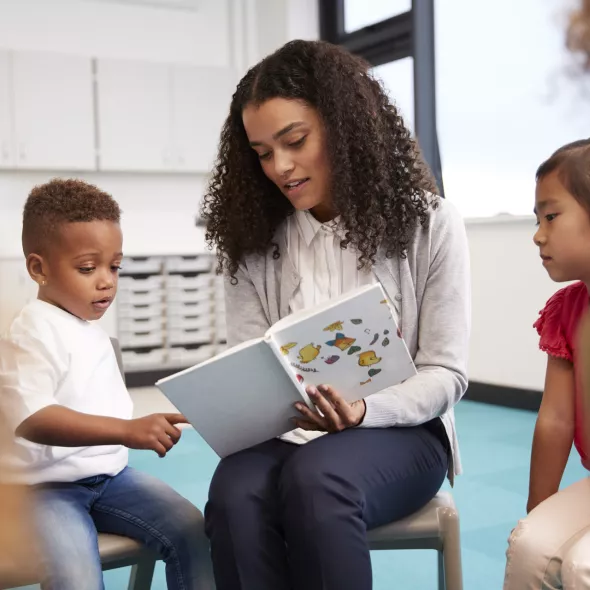
Schools and Natural Disasters
When a disaster occurs, schools are essential in helping communities recover. To be prepared, schools must engage in ongoing efforts like developing emergency operations plans (EOPs) and collaborating with community partners. These efforts ensure that schools and communities can respond effectively to disasters and support recovery.
The National Disaster Recovery Framework (NDRF) offers vital resources and guidelines for schools to plan for recovery before, during, and after an emergency. By focusing on recovery capabilities and coordinating with local agencies, schools can strengthen their role in disaster resilience and ensure smoother recovery.
Disaster Survivor Application Checklist
Before you start your FEMA application, please have the information below and a pen and paper ready.
- Social Security Number
- You, another adult, or a minor child member in your household must have a Social Security number. You or they must also be a U.S. citizen, non-citizen national, or qualified non-citizen.
- If you don't have a Social Security number, go to the Social Security Number and Card page. You will get instructions on what to do and what documents you will need.
- Once you have your number, you may come back to DisasterAssistance.gov or call the FEMA Helpline to apply.
- Insurance Information
- Describe the type(s) of insurance coverage you have. This could include coverage under policies like homeowners, flood, automobile, or mobile home insurance
- Damage Information
- Describe the damage caused by the disaster. Include the type of disaster (like flood, hurricane, or earthquake) and the type of home or vehicle (like a condo, mobile home or house, or a car or truck). (Photos before and after are helpful)
- Financial Information
- Provide your total annual household income, before taxes, at the time of the disaster.
- Contact Information
- Provide the address and phone number of the property where the damage occurred and the address and phone number of where FEMA can reach you.
- Direct Deposit Information (optional)
- If approved, FEMA can deposit your funds directly into your bank account.
- NEED HELP? If you need help with the application, please call the FEMA Helpline.
- For help with your application or to apply by phone, call the FEMA Helpline: 1‑800‑621‑3362
Issues Getting Assistance?
Experiencing issues contacting FEMA or other agencies for aid? Submit your story here so we can ensure you get the resources you need.
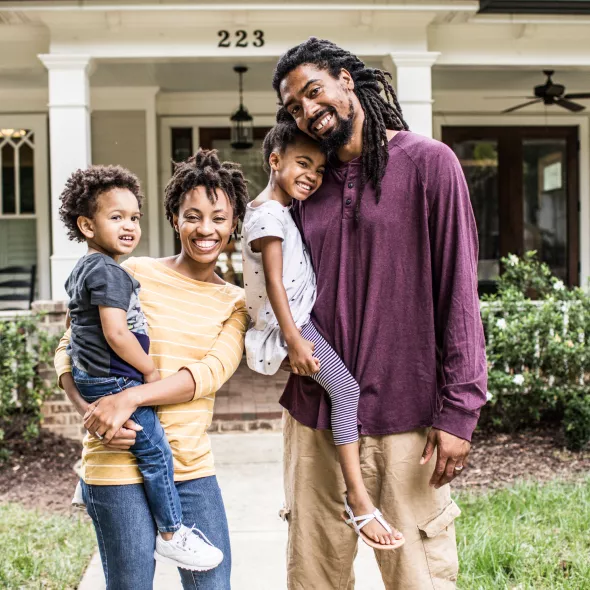
Natural Disasters and Rural Communities
Rural communities are often hit hardest by natural disasters, making preparedness and recovery crucial. The USDA Rural Development (RD) offers over 40 programs, including loans, grants, and technical assistance, to help rural areas build disaster resilience and support recovery efforts.
RD partners with local governments, nonprofits, and private organizations to provide these resources, working with local leaders to ensure rural communities recover more effectively and build stronger, disaster-resilient futures.
Climate Marginalization in America

NAACP in the News
Learn more about how the NAACP has prioritized climate change and environmental justice in the news.
